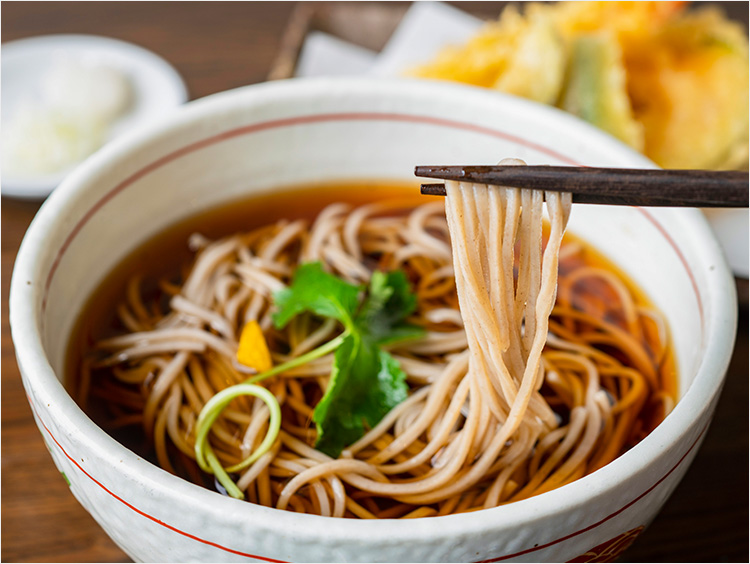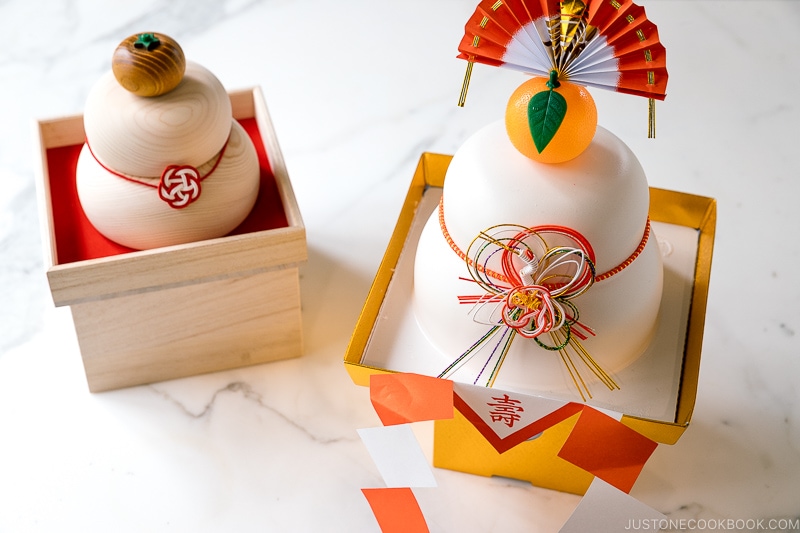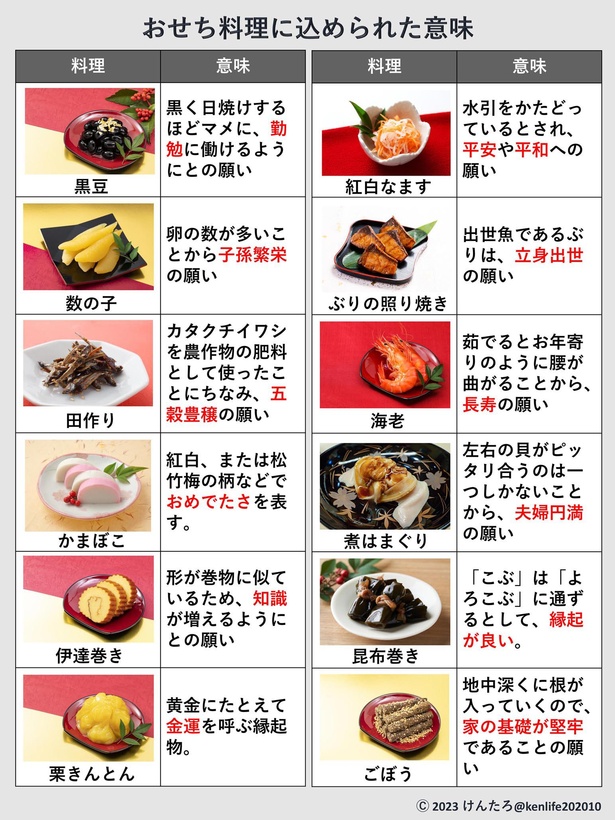The Japanese New Year, also known as 正月 Shogatsu, is a vibrant and culturally rich celebration that stretches from December 28 to January 3. It’s a time for families to reunite, reflect on the past year, and welcome the new one with hope and joy. This guide will walk you through Japanese New Year traditions, such as cuisine and activities, as well as phrases you can use!
A Quick Jump To…
- Preparing for the New Year
- Festive Delights
- Where to Get Osechi Ryori
- Ringing in the New Year
- Watching TV Shows With Friends and Family
- Japan’s New Year Goodies!
- New Year’s Greetings
- Japanese phrases you can use during New Year
- FAQ
Preparing for the New Year
The preparations for Shogatsu begin weeks in advance. Houses are meticulously cleaned, symbolizing the removal of bad luck from the previous year. This ritual, known as “お掃除 Osoji,” is believed to purify the home and prepare it for the arrival of 年神 Toshigami, the deity of the incoming year. Families join together in this collective effort to ensure a fresh start and welcome good fortune into their lives. Traditional decorations, such as 門松 kadomatsu (pine and bamboo arrangements) and しめ飾りshimekazari (straw ropes with ornaments), are placed at the entrance of homes to ward off evil spirits and invite good fortune.


Festive Delights
On New Year’s Eve, families gather to enjoy a feast of traditional dishes. Some of the most popular include:
- 年越し蕎麦 Toshikoshi soba: Buckwheat noodles symbolize the cutting off of the year’s misfortunes and wish for longevity.

- おせち料理 Osechi ryori: A beautifully presented box filled with various dishes representing good luck and prosperity, such as black beans for health, fish cakes for abundance, and shrimp for longevity. Osechi ryori can be both Japanese or Western food, but Japanese is more common. The price of osechi ryori also depends on the variety of the dishes.

- 餅Mochi: Pounded rice cakes symbolizing strength and resilience.

Here are some osechi ryori dishes
- 黒豆 Kuromame (black soybeans): Symbolizing health and strength. Often seasoned with sugar and soy sauce.
- 数の子 Kazunoko (herring roe): Symbolizing a wish for many children and grandchildren.
- 蒲鉾 Kamaboko (fish cakes): Symbolizing abundance and rising sun.
- 田造り Tazukuri (dried anchovies): Symbolizing a good harvest.
- 海老 Ebi (shrimp): Symbolizing longevity.
- 伊達巻 Datemaki (rolled omelet): Symbolizing wisdom and knowledge.
- 栗きんとん Kuri-kinton (sweet chestnut and sweet potato mash): Symbolizing wealth and prosperity.
- ごぼう Gobō (burdock): Symbolizing a good foundation for your home.
- ぶりの照り焼き Burinoteriyaki (Yellowtail teriyaki): Symbolizing success in life.
- 紅白なます Kōhakunamasu (Vinegared Raw Fish or Vegetables): Symbolizing peace and harmony.
- 昆布巻き Konbumaki (seaweed roll): Symbolizing finding a good relationship/fate.
- 煮はまぐり Ni Hamaguri (Simmered Clams): Symbolizing a good relationship between husband and wife.

Where to Get Osechi Ryori
- Department stores: Most major department stores in Japan sell pre-made Osechi Ryori boxes.
- Supermarkets: Many supermarkets sell pre-made Osechi Ryori boxes or individual Osechi Ryori dishes.
- Specialty stores: There are also specialty stores dedicated to selling Osechi Ryori.
- Online: You can also order Osechi Ryori online from various retailers.
Here are some websites to pre-order osechi ryori
Ringing in the New Year
At midnight, bells toll 108 times at Buddhist temples, signifying the cleansing of 108 earthly desires; this ritual is known as 除夜の鐘 Joyanokane. Many people visit shrines or temples for 初詣 Hatsumōde, the first prayer of the year, to offer blessings and wishes for the coming year.
The 初日の出 Hatsuhinode New Year’s first sunrise is considered particularly auspicious. Many people brave the cold to witness this spectacle, believing it will bring good fortune for the year ahead.
Check out our blog, Praying at Japanese Shrines: Experience Tranquility to know the right way to visit a Japanese shrine, what to do, what to get, and what to say!
Watching TV Shows With Friends and Family
On New Year’s Eve, a popular Japanese music show called 紅白歌合戦 Kouhaku Uta Gassen is aired on NHK. The Kouhaku Uta Gassen is a highly anticipated event in Japan, and it is sure to be a night of memorable performances and unforgettable moments.
2024 Kouhaku Uta Gassen, which is the 76th show, has lineups such as:
Red
- あいみょん
- 新しい学校のリーダーズ
- Ado
- ano
- 石川さゆり
- 伊藤 蘭
- 坂本冬美
- 櫻坂46
- 椎名林檎
- JUJU
- Superfly
- 天童よしみ
- NiziU
- 乃木坂46
- Perfume
- MISIA
- MISAMO
- 水森かおり
- milet
- YOASOBI
- 緑黄色社会
- LE SSERAFIM
White
- エレファントカシマシ
- 大泉 洋
- Official髭男dism
- キタニタツヤ
- 郷ひろみ
- さだまさし
- JO1
- 純烈
- 鈴木雅之
- すとぷり
- Stray Kids
- SEVENTEEN
- 10-FEET
- BE:FIRST
- 福山雅治
- 藤井フミヤ
- 星野 源
- MAN WITH A MISSION
- Mrs. GREEN APPLE
- 三山ひろし
- 山内惠介
- ゆず
Japan’s New Year Goodies!

お年玉 Otoshidama are red envelopes not filled with sweets but crisp yen bills, a New Year’s tradition showering kids with good fortune.
Imagine the squeals of delight as children discover their Otoshidama bounty on January 1st. It’s more than just cash; it symbolizes prosperity and growth, a chance to feel independent and plan big dreams. From buying that sparkly new toy to saving for bigger adventures, Otoshidama sparks excitement and teaches valuable financial lessons.
But Otoshidama isn’t just for kids. Adults can give them, too, spreading the cheer and wishing each other financial success in the coming year. It’s a heartwarming reminder that good things come in small, red packages and that sharing good fortune brings its reward.
New Year’s Greetings
In Japan, exchanging New Year’s cards called 年賀状 “nengajo” is a cherished tradition. These cards often feature the Chinese zodiac animal of the upcoming year and include heartfelt messages of goodwill for the recipient. Sending and receiving nengajo is a thoughtful way for friends, family, and colleagues to express their wishes for a prosperous and joyful year ahead.

Japanese phrases you can use during New Year
Formal Greetings
- あけましておめでとうございます。Akemashite omedetō gozaimasu. – Happy New Year! (Most common)
- 今年もいい一年にしましょう。Kotoshi mo ureshii ichinen ni shimashou. – Let’s make this year a happy one!
- 今年もどうぞよろしくお願いいたします。Kotoshi mo douzo yoroshiku onegaishimasu. – Please take care of me this year. (For people you know)
Informal Greetings
- あけましておめでとう!Akemashite omedetō! – Happy New Year! (Shorter version of formal)
- あけましておめでとう!今年もよろしく!Akemashite omedetō! Kotoshi mo yoroshiku! – Happy New Year! Same as above with informal “yoroshiku.”
- 今年もよろしく!Kotoshi mo yoroshiku! – Same as above but omitting “Happy New Year.”
Additional Phrases
- よいお年を。Yoi otoshi wo. – Have a good year! (Phrases to say before New year)
- 健康で幸せな一年になりますように。Kenkōde shiawasena ichinen ni narimasu you ni. – I wish you a healthy and happy year.
You Might Be Wondering…
How can I experience Shogatsu if I am visiting Japan?
Many shrines and temples hold special events and ceremonies open to the public during Shogatsu. You can also enjoy traditional New Year’s food at restaurants or purchase Osechi ryori boxes at supermarkets.
